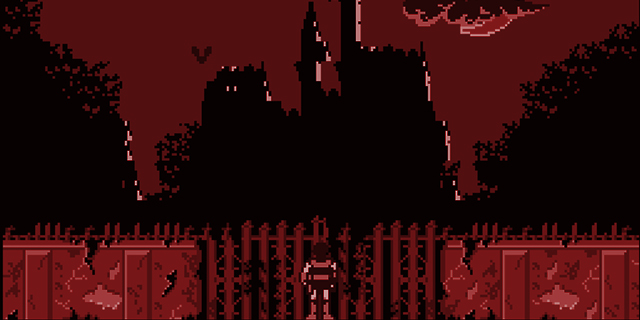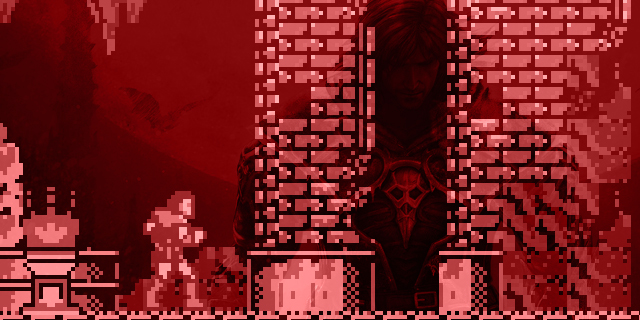
Welcome to From Pixels to Polygons, where we examine classic game franchises that have survived the long transition from the 8- or 16-bit era to the current console generation. We’ll be discussing the past and present of each series, while also giving our take on what we consider to be the franchise’s peak. To celebrate the recent release of Castlevania: Lords of Shadow: Mirror of Fate, we thought it would be best to start with a true classic: Castlevania.
The first adventures of Belmont
 While released first, the NES game we know as Castlevania was actually a simplified version of a MSX2 video game, confusingly sharing the same title in Japan, and the original source of physics, enemies, backgrounds and music, as well as the plagiarized Frank Frazetta illustration in the cover that for a long time I regarded as original. This game, known as Vampire Killer in the West, was an action-adventure not unlike later titles of the series. It was a large influence on both Castlevania II and Symphony of the Night, and reminiscent of Metroid in its methodology, a game released the very same year.
While released first, the NES game we know as Castlevania was actually a simplified version of a MSX2 video game, confusingly sharing the same title in Japan, and the original source of physics, enemies, backgrounds and music, as well as the plagiarized Frank Frazetta illustration in the cover that for a long time I regarded as original. This game, known as Vampire Killer in the West, was an action-adventure not unlike later titles of the series. It was a large influence on both Castlevania II and Symphony of the Night, and reminiscent of Metroid in its methodology, a game released the very same year.
But while Vampire Killer is by no means a bad game, most consider Castlevania as the template for the first ten years of the franchise, and its rigid physics and highly deliberate level design have yet to be matched. In fact, other than Ninja Gaiden, I can’t think of any game or series that took that route, as most platformers are built using Super Mario Bros. inertial physics or Mega Man variants. This makes them distinct in the cluttered world of platformers, and always worth a play. – Erik Twice
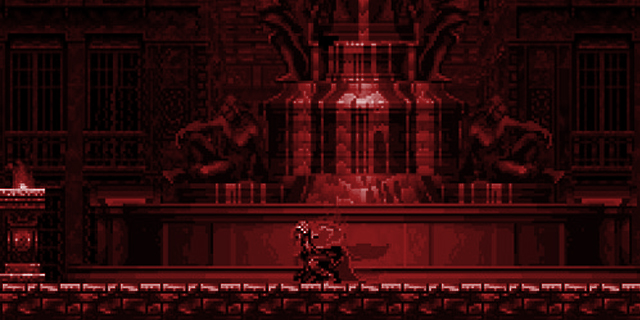
Symphony of the Night and beyond: The “Metroidvanias”
 Castlevania had a bit of a struggle with the inevitable switch to 3D at the beginning of the next generation. Unlike many classic platformers, the series decided to stick with its two-dimensional roots on the PlayStation, while simultaneously trying the jump to 3D on the Nintendo 64. While none of the 3D games really took off, Symphony of the Night became one of the biggest games in the franchise, and really showed that 2D gaming wasn’t quite dead yet.
Castlevania had a bit of a struggle with the inevitable switch to 3D at the beginning of the next generation. Unlike many classic platformers, the series decided to stick with its two-dimensional roots on the PlayStation, while simultaneously trying the jump to 3D on the Nintendo 64. While none of the 3D games really took off, Symphony of the Night became one of the biggest games in the franchise, and really showed that 2D gaming wasn’t quite dead yet.
Symphony gave us the term “Metroidvania:” a combination of the platforming and atmosphere of Castlevania, with the progression and exploration through a single level seen in the Metroid series, along with a few RPG elements. This formula was used again and again on the Game Boy Advance and later the DS. While Symphony clearly has the biggest following, a lot of this is due to the availability, as the game has been released digitally on both HD consoles at this point.
Handhelds really let the Metroidvania shine, with three games each on GBA and DS. Many consider the Metroidvania games to be some of the best in the series, and Symphony of the Night to be one of the best platformers of all time. I feel this era of Castlevania’s history offers a perfect mix of classic platforming and modern open-world exploration, though I also feel Konami didn’t use enough new ideas in the later games to keep people coming back. – Jeff deSolla
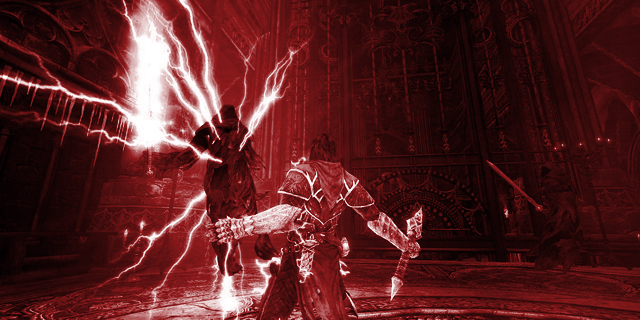
Rebirth of a classic
 While Castlevania has had a good number of 3D games in the past, none of them have caught on as much as Lords of Shadow. Considered by many to be a complete reboot of the series (or at least of the fiction), Lords of Shadow feels less like traditional Castlevania games and more like a God of War-style action game with ties to the lore that many people are familiar with. While its combat does little to separate it from other, similar titles, it’s the engrossing story and fresh take on the existing Castlevania fiction that distinguishes it from any game before it.
While Castlevania has had a good number of 3D games in the past, none of them have caught on as much as Lords of Shadow. Considered by many to be a complete reboot of the series (or at least of the fiction), Lords of Shadow feels less like traditional Castlevania games and more like a God of War-style action game with ties to the lore that many people are familiar with. While its combat does little to separate it from other, similar titles, it’s the engrossing story and fresh take on the existing Castlevania fiction that distinguishes it from any game before it.
It’s not just about the game’s fantastic final moments or its unexpected twist ending; it manages to take a franchise that is so specifically tied to a certain genre and give it a chance to try something a little different. This is a different take on Castlevania that doesn’t stray too far from its roots, but also manages to create an entirely new spin on a cherished franchise. – Andrew Passafiume
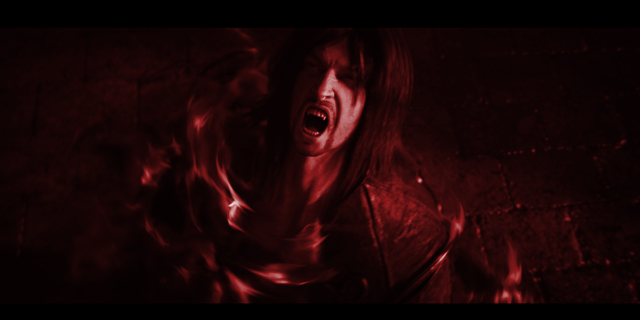
Speculating on the future of the franchise:
 Like it or not, the Lords of Shadow branch is likely the only one still active. Koji Igarashi is off doing the most random things, and the last 2D Castlevania projects seemed like cash-ins: things like The Adventure ReBirth and Harmony of Despair. MercurySteam’s portable effort was a weak one, though, so there’s an opening for something new or interesting on the 3DS in a year or two.
Like it or not, the Lords of Shadow branch is likely the only one still active. Koji Igarashi is off doing the most random things, and the last 2D Castlevania projects seemed like cash-ins: things like The Adventure ReBirth and Harmony of Despair. MercurySteam’s portable effort was a weak one, though, so there’s an opening for something new or interesting on the 3DS in a year or two.
In the immediate future, we have Lords of Shadow 2, set for release sometimes this year. It continues the ideas of the first, and looks to ramp up the flash and intensity of the combat itself. When you look at the fates of many classic series, a sustainable big-budget action franchise like this is definitely on the better half of the scale. – Graham Russell
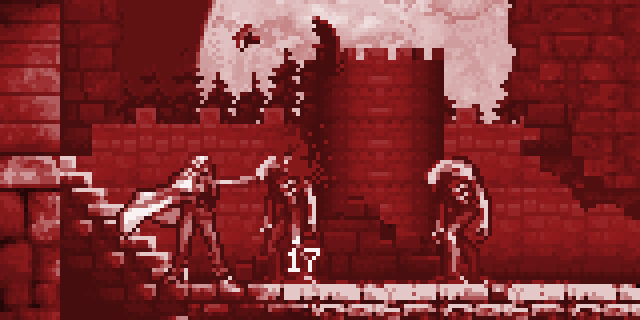
What’s the peak of the Castlevania series?
 Andrew: As much as I love Symphony of the Night, that was merely the start of something amazing, not the best the franchise had to offer. Konami quickly began to replicate that formula as much as it could. Not every result was great, but eventually they hit what I consider to be the high mark of the portable Castlevania titles: Aria of Sorrow. This was both the last truly amazing game to bear any resemblance to Symphony of the Night, it also managed to cap of a trilogy of good to great Game Boy Advance releases in the series. The DS games were fine, but the series hasn’t managed to reach the same heights as it did back in 2003. I would love to see Konami revisit this formula again just to see if they can top that classic and revive what I consider to be the best Castlevania has to offer.
Andrew: As much as I love Symphony of the Night, that was merely the start of something amazing, not the best the franchise had to offer. Konami quickly began to replicate that formula as much as it could. Not every result was great, but eventually they hit what I consider to be the high mark of the portable Castlevania titles: Aria of Sorrow. This was both the last truly amazing game to bear any resemblance to Symphony of the Night, it also managed to cap of a trilogy of good to great Game Boy Advance releases in the series. The DS games were fine, but the series hasn’t managed to reach the same heights as it did back in 2003. I would love to see Konami revisit this formula again just to see if they can top that classic and revive what I consider to be the best Castlevania has to offer.
 Erik: Not being a fan of exploration or rising statistics, it may not be surprising that I consider Castlevania III to be the peak of the series. Keeping everything that made the original NES title great, it improves over it by being a little more imaginative, taking bigger risks in the levels. Sure, it may not be as thematically consistent, but its gameplay is so interesting that I don’t really care!
Erik: Not being a fan of exploration or rising statistics, it may not be surprising that I consider Castlevania III to be the peak of the series. Keeping everything that made the original NES title great, it improves over it by being a little more imaginative, taking bigger risks in the levels. Sure, it may not be as thematically consistent, but its gameplay is so interesting that I don’t really care!
 Jeff: I have to go with Symphony of the Night. The first of the Metroidvanias, it brought new ideas to the franchise, and defined an era. Like Super Metroid before it, Symphony of the Night became the standard to which open-ended platformers would hold themselves. While the later games would expand on the formula, many of them didn’t exactly deliver to expectations, simply being “more Metroidvania” without much originality behind them. While I would love to see more games in this style, I would absolutely go for a re-release of the GBA games on current handhelds. I was a fan of Lords of Shadow, but I would love to see Konami revisit its roots.
Jeff: I have to go with Symphony of the Night. The first of the Metroidvanias, it brought new ideas to the franchise, and defined an era. Like Super Metroid before it, Symphony of the Night became the standard to which open-ended platformers would hold themselves. While the later games would expand on the formula, many of them didn’t exactly deliver to expectations, simply being “more Metroidvania” without much originality behind them. While I would love to see more games in this style, I would absolutely go for a re-release of the GBA games on current handhelds. I was a fan of Lords of Shadow, but I would love to see Konami revisit its roots.
 Graham: There are many strong entries in the series, but to me, it hit its ceiling with Dawn of Sorrow. It’s largely for the same reasons Andrew likes Aria, and with good reason: it’s a true sequel, in plot and mechanics, and is very similar. There are just a few parts of the game that benefit from the extra memory and screen space of the DS that put it over the top for me, but don’t get me wrong: both of the games are very, very good.
Graham: There are many strong entries in the series, but to me, it hit its ceiling with Dawn of Sorrow. It’s largely for the same reasons Andrew likes Aria, and with good reason: it’s a true sequel, in plot and mechanics, and is very similar. There are just a few parts of the game that benefit from the extra memory and screen space of the DS that put it over the top for me, but don’t get me wrong: both of the games are very, very good.
In our next installment, we’ll be covering the adventures of a lovable pink puffball: Kirby.



